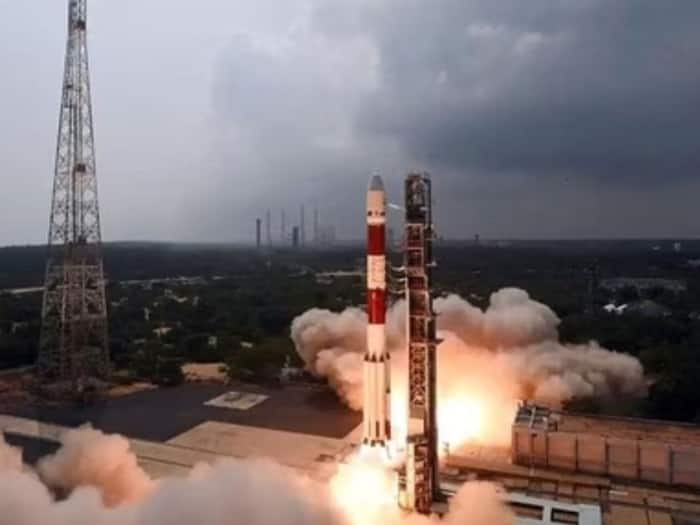ISRO will launch its first mission of 2024, XPoSAT, on January 1, 2024, with the aim of studying the universe, especially the black holes. Read to know the launch date, time, target and other details of the XPoSAT mission.
New Delhi: Looking back at the year 2023 in terms of the country’s success, one of the first things that comes to one’s mind is the successful missions of the Indian Space Research Organization (ISRO). After you’ve made history with Chandrayaan-3 and successfully launched its first solar mission, Aditya-L1, ISRO is ready to start 2024 with a bang. The Space Agency is all set to launch India’s first dedicated polarimetry mission to study the different dynamics of bright astronomical X-ray sources under extreme conditions – XPoSAT on January 1, 2024. Read on to know what is XPoSAT, XPoSAT launch date and time, XPoSAT mission objectives and other such important details…
ISRO ready to launch XPoSAT
As mentioned earlier, the Indian Space Research Organization (ISRO) plans to launch the XPoSAT mission on January 1, 2024. If this mission is successful, India will become the second country in the world to launch an advanced astronomical observatory to study the different dynamics of bright astronomical X-ray sources under extreme conditions, especially black holes and neutron stars.
According to the website, ISRO’s PSLV-C58 mission is to launch the XPOSAT satellite in an easterly, low-inclination orbit. After injection of XPOSAT, the PS4 stage is restarted twice to reduce the orbit to a circular orbit of 350 km to maintain the 3-axis stabilized mode for Orbital Platform (OP) experiments.
What is ISRO’s latest XPoSAT mission?
According to the official website of the Indian Space Research Organization (ISRO), XPoSat (X-ray Polarimeter Satellite) is India’s first dedicated polarimetry mission to study the various dynamics of bright astronomical X-ray sources under extreme conditions. The spacecraft will carry two scientific payloads into low Earth orbit. The primary payload POLIX (Polarimeter Instrument in X-rays) will measure the polarimetry parameters (degree and angle of polarization) in an average X-ray energy range of 8-30 keV photons of astronomical origin. The XSPECT (X-ray Spectroscopy and Timing) payload will provide spectroscopic information in the energy range of 0.8-15 keV.
What will the XPoSAT mission do?
Talking about why this mission is being launched, the ISRO website says: The emission mechanism from various astronomical sources such as black holes, neutron stars, active galactic nuclei, pulsar wind nebulae etc. arises from complex physical processes and is challenging to understand. . Although the spectroscopic and timing information from several space-based observatories provide a wealth of information, the exact nature of the emission from such sources still poses greater challenges to astronomers. The polarimetry measurements add two more dimensions to our understanding, the degree of polarization and the polarization angle, and are thus an excellent diagnostic tool for understanding the emission processes from astronomical sources. The polarimetric observations, together with spectroscopic measurements, are expected to break the degeneracy of various theoretical models of astronomical emission processes. This would be the main research direction of XPoSat by the Indian scientific community
XPoSAT mission objectives
The objectives of this mission are:
- To measure the polarization of X-rays in the energy band 8-30 keV, coming from about 50 potential cosmic sources via Thomson scattering by POLIX charge.
- Performing long-term spectral and temporal studies of cosmic X-ray sources in the energy band 0.8-15 keV using XSPECT payload.
- Performing polarization and spectroscopic measurements of X-rays from cosmic sources by POLIX and XSPECT charges in the common energy band, respectively.
XPoSAT mission payloads
The XPoSAT mission has two payloads, namely POLIX (Polarimeter Instrument in X-rays) and XSPECT (X-ray Spectroscopy and Timing). POLIX is realized by Raman Research Institute and XSPECT is by Space Astronomy Group of URSC.
According to the website, POLIX is an X-ray polarimeter for astronomical observations in the energy band of 8-30 keV. The payload is being developed by Ramam Research Institute (RRI), Bangalore, in collaboration with UR Rao Satellite Center (URSC). The instrument consists of a collimator, a scatterer and four proportional X-ray detectors surrounding the scatterer. The scatterer is made of low atomic mass material that causes anisotropic Thomson scattering of incoming polarized X-rays. The collimator limits the field of view to 3 degrees x 3 degrees, so that for most observations there is only one bright source in the field of view. POLIX is expected to observe approximately 40 bright astronomical sources of various categories during the XPoSat mission’s planned lifetime of approximately 5 years. This is the first charge in the medium X-ray energy band specifically intended for polarimetry measurements.
While XSPECT is an X-ray spectroscopy and timing payload onboard XPoSat, which can provide fast timing and good spectroscopic resolution in soft X-rays. By using the long-term observations that POLIX needs to measure X-ray polarization, XSPECT can provide long-term monitoring of spectral state changes in continuum emission, changes in their line flux and profile, and simultaneous long-term temporal monitoring of soft X-ray emission in the ,8-15 keV. A range of Swept Charge Devices (SCDs) offer an effective area >30 cm2 at 6 keV with energy resolution better than 200 eV at 6 keV. Passive collimators are used to reduce background by narrowing the field of view of XSPECT. XSPECT would observe different types of sources, namely X-ray pulsars, black hole binaries, low magnetic field (NS) neutron stars in LMXBs, AGNs and Magnetars.


